Contents
Flax is a plant that has long been “cultivated” by mankind. It is known mainly as a “raw material” for oil, fabrics and seeds. However, relatively recently they began to use flax as green manure. At first glance, it seems that the culture does not fully meet the criteria for these plants, but with such “non-standard” use, it copes with the functions.
Is it possible to use flax as a green manure
The use of oilseed flax as green manure is a “non-standard” solution, in practice not familiar to all gardeners. Indeed, it does not meet the requirements for crops from this category: first of all, it is the ability to quickly form large volumes of green mass and the minimum requirements for the place of planting and care.
However, experience shows that flax successfully performs all the tasks of green manure. The list includes:
- restoration of friability, soil structuring;
- increasing its fertility due to “saturation” with macro- and microelements contained in greenery;
- pest repellent;
- weed control.
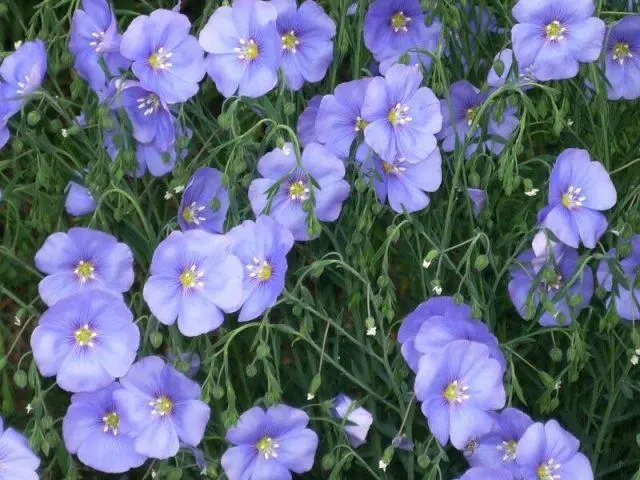
There are annual and perennial varieties of flax; only the first ones are used as siderat
Advantages and disadvantages of flax as green manure
The growing demand for flax as green manure is associated with its positive qualities:
- The possibility of “ennobling” any soil, except for highly acidified, saline and waterlogged.
- High cold resistance. Flax seeds as green manure can be sown already in early April, when the average daily temperature is set at 7-8 °C. Seedlings do not suffer from return frosts down to -3 °C. And 2-5 ° C for them is a completely normal temperature for development.
- Suitable for planting throughout the season.
- The release of tannins into the soil – specific alkaloids that the Colorado potato beetle and wireworm do not tolerate.
- Developed root system, successfully loosening even “heavy” soils.
- Dense structure of green mass. Despite the relatively small volume, the greens successfully prevent the growth of weeds in the beds.
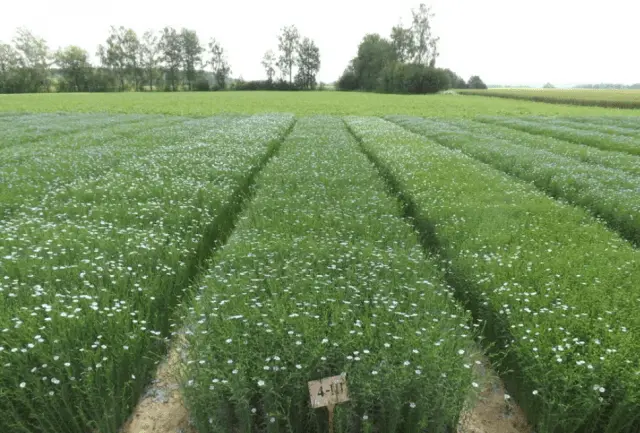
Flax as green manure demonstrates the same efficiency in spring and winter planting
Flax used as green manure also has certain disadvantages:
- The high cost of seeds. By region, it varies markedly, but still, flax seeds are on average more expensive than other green manure.
- Relatively small amount of green mass. This is unusual for gardeners, but, in fact, it is not a minus: flax greens are quite enough to perform the functions of green manure.
- The need for care during the season. The plant definitely needs fertilizer. It is especially important to add them before flowering to saturate the greenery before planting useful substances into the soil.
- Unsuitable for planting in deep shade. With a shortage of sunlight, the culture is practically useless: the development of the aerial part slows down greatly, and a continuous “carpet” of green mass does not work.
What crops are suitable for
Given that flax effectively repels the Colorado potato beetle and wireworm, it is a particularly valuable green manure for potatoes and other Solanaceae (tomatoes, eggplants, bell peppers). The Colorado potato beetle can also cause great damage to them: contrary to popular belief, its “sphere of interest” is not limited to potatoes.

Linen between rows – effective protection of potatoes from the Colorado potato beetle
In addition, flax is a suitable green manure for carrots. The experience of growing it on household plots and on an industrial scale proves that root crops develop more actively in soil saturated with tannins, their quality improves.
When to sow flax as green manure
Flax as green manure can be sown both in spring and autumn. Less commonly practiced gradual overseeding and mowing several times during the summer. Specific dates are determined depending on the characteristics of the local climate.
In the spring, it is sown early enough – the frost resistance of the crop allows this. It is only necessary to wait until the required average daily temperature of 7-8 ° C is established.
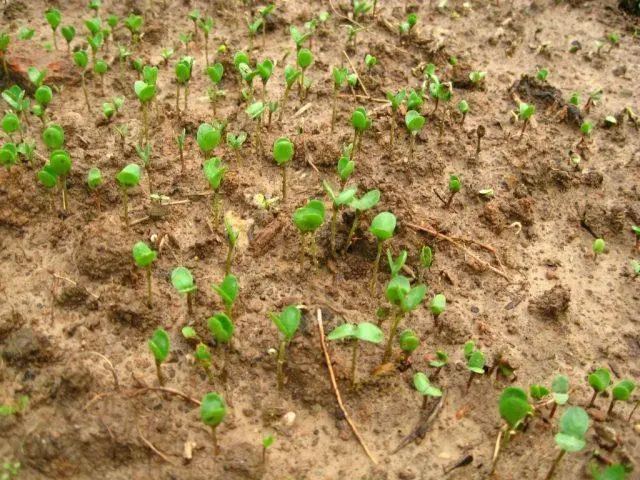
In autumn, the time is calculated so that the seeds have time to germinate before the first frost.
Landing technology
When choosing a site for sowing, it is necessary to take into account the requirements of the culture for the place of growth. Be sure to pay attention to the illumination of the beds and the quality of the substrate.
The soil is always prepared in advance. If flax as green manure is planned to be sown in the spring, the necessary work is carried out in the autumn of last year. For planting during the current season, the bed is prepared in 2,5-3 weeks.
If possible, the selected area is dug up or well loosened, a complex fertilizer containing nitrogen, potassium and phosphorus (5-7 g / m²) is applied. Immediately before sowing during the summer or autumn, it is advisable to water the soil well.
Flax as green manure is sown “scattered” or in furrows up to 2 cm deep with a row spacing of 15-20 cm. In both cases, after this, the seeds must be “covered” with earth.
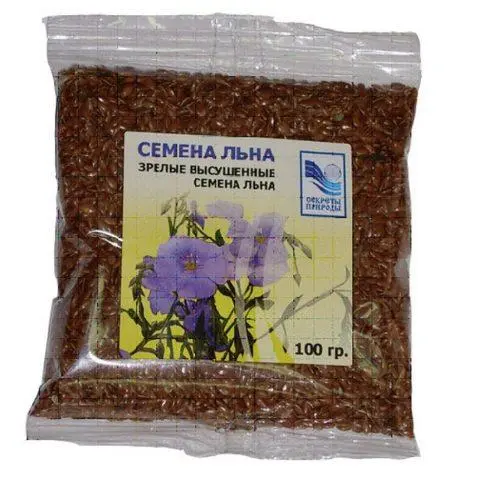
If flax seeds remain in the light after sowing, then their germination capacity drops noticeably, it takes more time for the seedlings to appear
Care instructions
Compared with other green manure crops, flax is considered a rather “whimsical” culture, but it still won’t take much time and effort to take care of it from the gardener. Agricultural technology includes:
- Watering. In principle, flax tolerates drought well, but it is still not recommended to regularly “overdry” green manure plantings. From the end of May, when the soil dries out after melt water, it is recommended to water them every 7-12 days if there is no rain.
- Top dressing. Fertilizers are applied twice: mineral nitrogen and complex, with the content of nitrogen, phosphorus and potassium. Flax grown as a green manure also responds well to organic top dressing – infusions of bird droppings, manure, “green tea” from weeds, purchased products based on humates.
- Disease prevention. If symptoms of fungal diseases that are potentially dangerous for flax are observed on other horticultural crops, it is recommended to treat the green manure plantings and the soil in the garden for prevention with a fungicide solution.
Mowing and embedding into the soil
It takes 10-15 days for flax seeds to germinate. After another 5-6 weeks, the phase of mass budding begins – the most favorable time for mowing green manure. If you are too late, the greenery becomes unsuitable for embedding in the ground. Flax stalks coarsened after flowering rot slowly and “reluctantly”, instead of a source of useful substances, they become potential “distributors” of fungi that cause mold and rot.
The mowing procedure itself is standard. Greens with the help of a chopper, flat cutter or cultivator are cut almost flush with the soil and immediately embedded in the surface layer of the most fertile top soil (10-15 cm).
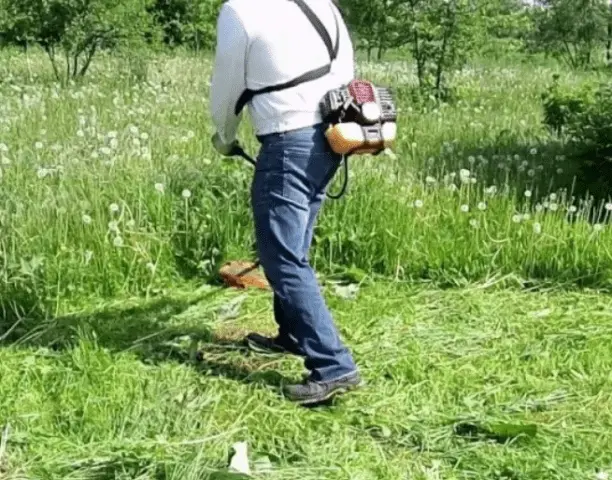
Some gardeners leave the greens in the garden for 3-4 days, letting it “wilt”, but this is rarely practiced.
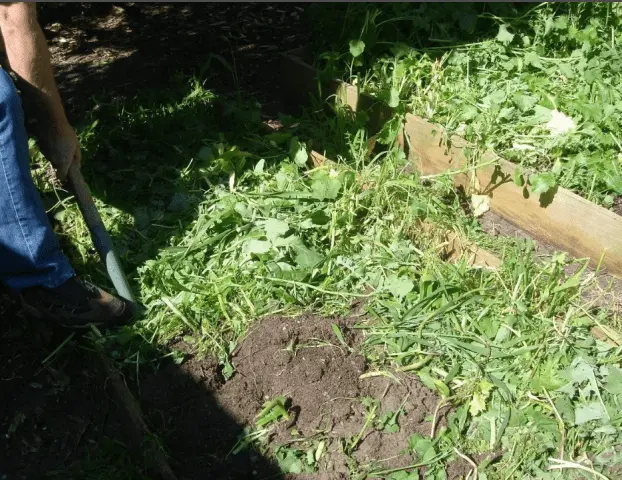
Flax planted before winter is not mowed: the greenery is simply allowed to “go under the snow” so as not to lose its beneficial properties
Conclusion
Flax as green manure is relatively little promoted so far. However, its competent use, of course, brings great benefits to the garden. In addition to the “standard” functions of increasing fertility and improving soil quality, it also successfully copes with the “expulsion” of dangerous pests. In agricultural technology, flax is a little more demanding than other green manure, but it is impossible to say that planting and further care will take a lot of time and effort from the gardener.









